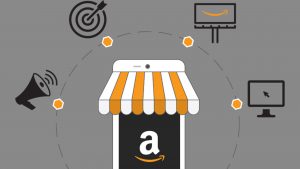2018’s Amazon Prime Day promised customers big deals and third-party sellers big profits – but did it deliver? And at what cost?
This year’s installment of Prime Day was Amazon’s largest sales event of all-time.
 Though the company does not disclose their sales revenue to the public, financial analyst Michael Pachter of Wedbush Securities estimated that Amazon shipped over 100 million different products over the first 24 hours of the 36 hour event.
Though the company does not disclose their sales revenue to the public, financial analyst Michael Pachter of Wedbush Securities estimated that Amazon shipped over 100 million different products over the first 24 hours of the 36 hour event.
With over 100 million Prime members around the world since early 2018 and many new subscriptions coming the week before Prime Day, it was no surprise that the event brought in substantial revenue.
What was surprising, however, was the online traffic outages that many thought Amazon was impervious to.
Instant Monetary Reaction to Prime Day
With even more network traffic than expected, Amazon actually toppled most of the revenue projections for Prime Day.
Coresight Research had initially projected $3.4 billion in revenue for Prime Day, but the Daily Herald reported that consumers spent at least $4.2 billion between July 16 and 17.
If the $4.2 billion estimate is correct, Amazon will have boosted its event sales from 2017 by about 33 percent.
With JP Morgan estimating that a Prime account is actually worth $785 a year with everything offered, more and more customers are flocking to the service that is reportedly worth over 6.5 times its actual cost.
This all should be great news to third-party sellers, who experienced a 28 percent increase in sales across the board during Prime Day according to e-commerce software organization, Skubana.
That boost in sales likely makes up for the advertising fees that Amazon imposed on customers if they wished to be featured in the “lightning deals” section during the event.
“A rising tide lifts all ships,” Skubana co-founder Chad Rubin told the Daily Herald. “The increase in traffic benefited [third-party sellers], especially those that saw an increase of top-line revenue without paying extra for lightning deals or allocating more dollars to Amazon advertising.”
Additionally, Business Insider reported that over 300,000 six-quart Instant Pots and 150,000 LifeStraw water filters were purchased during the event, meaning that sellers who sell those products or similar ones likely made a killing.
Those figures should also tell sellers who are not invested in products like these to consider adding them to their selling repertoire.
All told, third-party sellers must be excited by the end results, whether they had paid to be featured in the “lightning deals” section or not. If they were not featured in it this year, they should weigh the benefits and drawbacks for their business and remember the old adage that one must spend money to make money.
The fact that Amazon could have done even better if not for network outages should simultaneously frustrate sellers and give them hope for an even greater turnout next year.
What Went Wrong On Prime Day?
Though Amazon expected more network traffic than ever before, somehow the company was still not ready for the immense amount of international traffic that it received.
Issues started “within 15 minutes of the start of Prime Day,” according to CNBC, and at one point Amazon was forced to temporarily shut down all international traffic and manually add additional servers to meet the heavy demand.
The traffic outage struck Amazon so deep into its core servers that other online platforms that Amazon runs, such as the Alexa device, Twitch and even warehouse package scanners were rendered ineffective at times.
A problem with Amazon servers auto-scaling features is considered by many to be the most likely reason for the network issues.
Co-founder of Veriflow and University of Illinois professor Matthew Caesar told CNBC:
“More people came in than Amazon could handle. Amazon couldn’t use all the resources that they had available because there was a bug or some other issue with their software. If their auto-scaling wasn’t working, things would have scaled automatically and they wouldn’t have had this level of outage. There was probably an implementation or configuration error in their automatic scaling systems.”
CNBC’s Eugene Kim elaborated on the specifics of the auto-scaling issues, stating:
“A breakdown in an internal system called Sable, which Amazon uses to provide computation and storage services to its retail and digital businesses, caused a series of glitches across other services that depend on it, including Prime, authentication and video playback.”
Amazon has to be wary of making mistakes like this in the future, due to the highly volatile nature of online retail.
“Prime Day shows that even Amazon isn’t immune and regardless of the retailer, discounts alone aren’t enough and without a seamless, enjoyable experience, the consumer will go elsewhere,” marketing savant Robin Copland told Business Insider.
Considering that the e-retail giant has raised the standard for online customer service to the highest it has ever been, customers have become accustomed to near-perfection from the company. Anything less, such as what happened on Prime Day, gives other companies a chance to win over consumers by not making the same mistakes.
The company also has to keep in mind that due to the record breaking number of customers expected at events like this, they must over prepare, meaning they may will need significantly more servers next year.
“Amazon is operating at a scale we haven’t operated before,” USC computer science professor Carl Kesselman said. “It’s not clear there’s a bad guy or an obvious screw-up. It’s just we’re in uncharted territory, and it’s amazing it didn’t just fall over.”
While Amazon will surely add to the sheer amount of servers worldwide for their next event, an email obtained by CNBC from Amazon’s worldwide retail CEO Jeff Wilke suggests that, “Tech teams are already working to improve our architecture, and I’m confident we’ll deliver an even better experience next year.”
Despite all the issues that Amazon experienced this year, Prime was still an overwhelming success monetarily. While some sellers should be rightfully concerned about the mishaps, the fact that Prime Day 2019 promises to be even better should tantalize sellers.

Author: Prime Day 2018
Cyril Zackary Penn IV is a soon-to-be graduate of Hofstra University with a Journalism degree from Sonoma, California. He started his own blog in high school and has been writing about sports, news and entertainment since. He is currently a staff writer at AXcess Baseball as well as the Hofstra Chronicle and formerly was the Sports Editor at Man of the Hour Magazine.